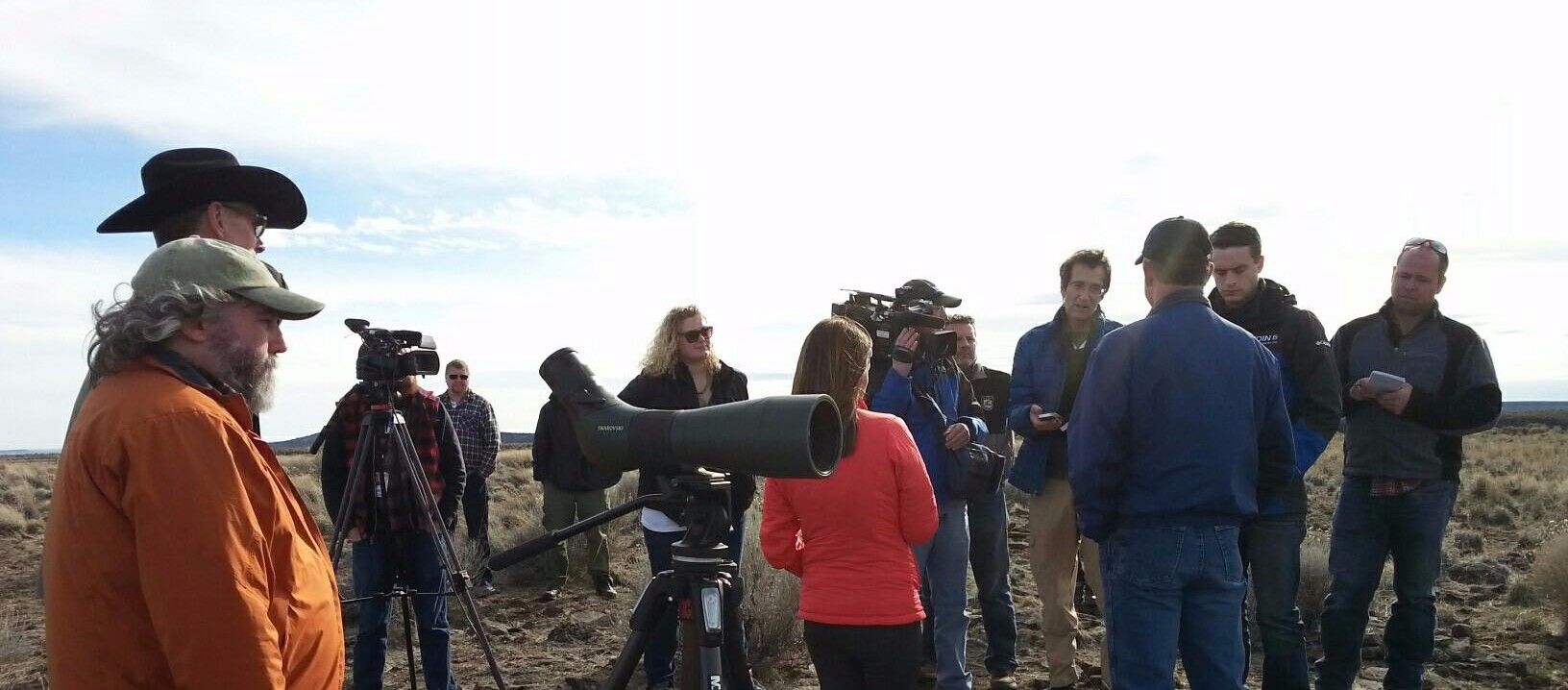After mountain snowmelt and an abnormally wet spring caused widespread flooding throughout the Harney Basin, the Emergency Flood Infrastructure Restoration (EFIR) program stepped in to help landowners with repairs caused by the flooding.
The projects had to be closely tied with repairs to flood irrigation, and the program received much interest with more than 40 applicants applying for funding in May. “With a turnaround and closure date of a little over two months, the outreach was incredible,” said Braden Morris, SONEC Partner Biologist for the Harney Soil and Water Conservation District (HSWCD) and one of the managers of the EFIR program. HSWCD along with the High Desert Partnership’s Harney Basin Wetlands Collaborative put the program in motion by reallocating cost savings from an irrigation project funded through a legislative bill awarded to the wetlands collaborative.
Site visits were conducted for all the applications, and a ranking system was used to determine which projects were funded. The EFIR program had a budget of $132,638 and ended up giving the greenlight to help 32 applicants make flood irrigation repairs. Morris said it was a tough selection process. “We wanted to make sure that everybody who put in an application had a fair opportunity to get funded,” he said.
Funded projects included culvert replacements, dike repair and head gate fixes, among others. Some applicants stated that they needed their ditches cleaned, which fit the specification for another program offered through HSWCD. “That’s where the Water Conveyance and Dispersal Management Program comes into play,” Morris said. HSWCD really tried to make sure that every applicant who had flood irrigation damage received something to help repair the damage.
The program has opened the HSWCD to work with more local landowners. Morris noted they have been able to help connect landowners with what the HSWCD and Natural Resource Conservation Service can offer. “It’s been eye-opening for the community, which has been great,” Morris said.
Casey Shelman, manager of the Bell-A Ranch, said they had 21 sites on the ranch, including dikes, levees and pipes, that experienced damage from the spring flooding. He applied for the program, and Morris visited the ranch and took photos for the site visit. Shelman expects to use the funds he’ll receive to purchase rock to fill in places the flooding washed out. He said the ranch budgets about $20,000 each year to fix normal wear and tear on irrigation related equipment. With the abnormal spring flooding, there was more damage and more repairs. “If you see some funding, you go after it,” he said.
The approved projects range from $300 to several thousand dollars and are scheduled for completion this fall. The unusually wet spring created both challenges and opportunities. While the abundant water delayed many landowners' haying operations until later in the summer, it also highlighted the urgent need for flood damage repairs. As the haying season winds down, HSWCD is now advocating for project implementation between September and December, when ground conditions are optimal for heavy equipment operation.
The repair work requires precise timing and substantial effort. According to Shelman, flood damage repairs have been underway since July because the drier months are essential for moving large equipment safely across the ground. Using backhoes to strategically place rock and dirt, crews are filling holes and stabilizing damaged areas. The carefully selected rock materials will help restore ground stability and integrate naturally into the landscape. For operations like the Bell-A Ranch, these repairs are critical regardless of funding assistance. Shelman emphasized that proper spring irrigation function depends on fall repairs.
The program demonstrates effective emergency response, collaboration and community commitment. Morris noted how quickly the EFIR program came together, calling it "a fulfilling and eventful summer" of site visits. Working as a participant in the Harney Basin Wetlands Collaborative, HSWCD helped strategically deploy legislative funds to address the emergency while maintaining their original conservation intent. For projects that didn't receive EFIR funding, HSWCD continues seeking alternative funding sources; and, to ensure completion of EFIR projects this fall, many landowners are contributing their own labor.

